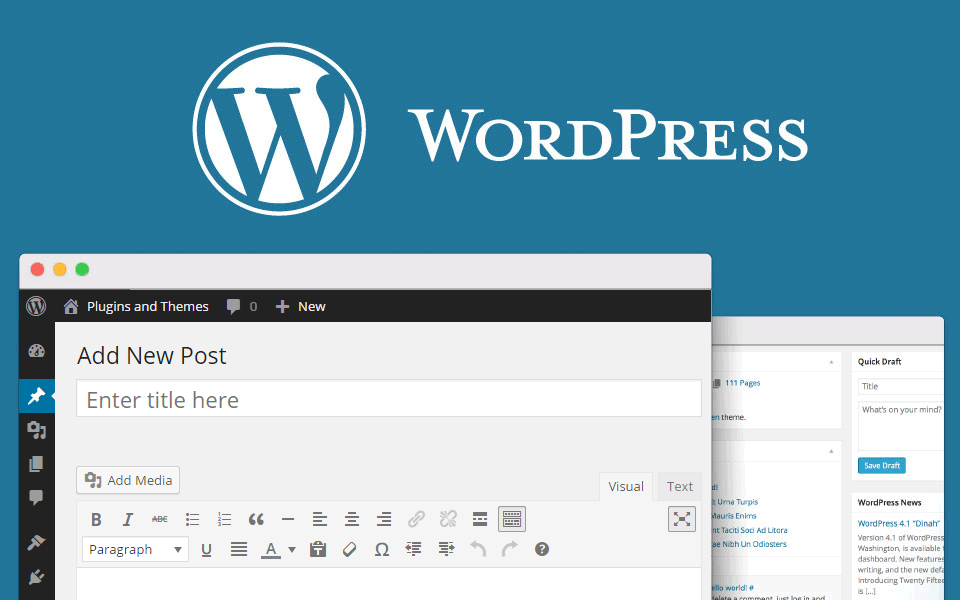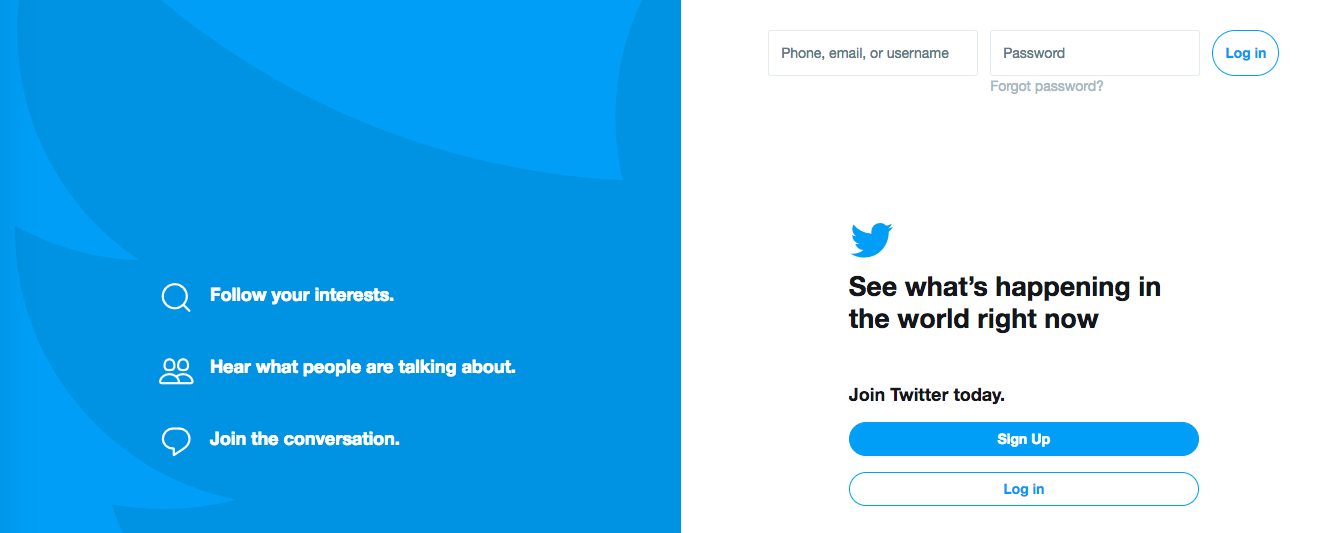Building an audience for your blog—and maintaining it over time—can be one of the most challenging aspects of online publishing. Regardless of your subject matter or style, compelling blog content is the key to keeping your readers coming back for more. The following universal guidelines are guaranteed to help you create captivating, share-worthy posts that resonate with your target audience.
Write an Attention-Grabbing Headline
According to the legendary advertising giant David Ogilvy, most ads and articles lose about 80 percent of their readers after they read the headline. This gives the title of your blog post a weighty responsibility. A good headline is concise, direct and provides your readers with a clear sense of what the post is about. Clever headlines are effective in some cases, but use caution. Being overly snarky or cute can drive readers away. When in doubt, simple titles that incorporate powerful verbs are always a good bet.
Tell a Great Story
Does your subject matter happen to be somewhat dry? Regardless, a good story is the most effective way to engage your readers and make them care about the topic. If possible, lean on personal experiences and firsthand anecdotes that relate to your main point. However, you can also search online to find relevant narratives to spice up the meat-and-potatoes content of your post.
Get Creative with Your Introduction
If your readers make it past your headline, the introduction of your post is where you’ll either hook them or lose them for good. Get creative with your introduction by incorporating the aforementioned anecdote. Alternatively, add a bit of humor or paint a vivid picture with a powerfully-worded description of a person or place. This is the essence of compelling blog content. You can also establish a sense of empathy or connection with your readers by relating to a problem or question they may be grappling with. You can also begin foreshadowing the solution you’ll provide later in the post. But don’t take too long.
Be Intentional with Your Tone
A bland, generic tone can make even the most interesting topic sound uninspired. Unless you’re writing exclusively to an academic or executive audience, a conversational approach is the most effective way to connect with your readers. In most cases, you’ll want your writing to sound similar to the way you normally talk. Not only will it come across as authentic, but in most cases, it will be easy for people to read and understand. And unless it’s something you would ordinarily use in a sentence, avoid using obscure “ten-dollar” words to impress your readers; insincerity is a big turn-off for readers.
Incorporate a Meme
Memes are concepts, actions, and ideas that “go viral” online, most commonly in the form of graphics, videos, phrases and hashtags. Incorporating a popular current meme into your posts creates an instant sense of connection with readers by making them feel like they’re in on the joke. Check out this article for 10 ways some popular brands have incorporated memes into their marketing strategies; then use it as inspiration for leveraging a meme in your own blog post.
Use Images for Maximum Impact
According to recent marketing research, blog posts with images get 94 percent more views than posts with no images. That’s a massive increase in visibility that requires very little effort. Using high-quality images makes your content more share-worthy, lends credibility to your content and boosts readers’ retention of the information in your post. Ideally, your post will contain one image for every 350 words; too many photos can overwhelm or distract readers, while too few photos will fail to render the desired impact.
It’s relatively easy to source good photos online, but make sure you have the adequate permissions to use them on your blog, or you run the risk of violating copyright laws. The simplest method is to use Google Image search and filter your query to return photos with a creative commons license, which are free and legal to use in most cases. You can also search the variety of free and paid online stock image sites online, including Getty Images, Shutterstock, Photodropper, Pixabay and Stock Free Images.

Make Your Posts Scannable
A landmark study of how people use the internet showed that almost 80 percent of web users don’t actually read all of the information on a page; they simply scan it for key details. With that statistic in mind, consider the following guidelines to make your posts more scannable—and therefore useful—to your readers.
- For particularly complex topics and compelling blog content, divide the information up into a series of posts. Not only will this format make the details more digestible to readers, but it also will compel them to come back to your blog to read the next installation in the series.
- Structure each paragraph as an “inverted pyramid,” with your conclusion at the beginning and supporting details following it.
- Keep paragraphs short. Three to five sentences should be your average, and don’t be afraid to sprinkle in a single-sentence paragraph for emphasis.
- Break up your post with subheads to keep readers engaged and provide periodic summaries of your content.
- Use “meaty” captions with your photos to ensure that readers catch the key ideas in your post, even if they don’t read much of the text.
Include Links to Relevant Posts (Yours or Someone Else’s)
If you’ve already blogged about an idea or topic within your current post, adding a link to it within your text will create a better experience for your readers, keep them on your site longer and boost your in post SEO performance.
Linking to content created by others lends credibility to your ideas and shows that you’ve done your homework. It also provides added value to your readers in the form of new, potentially problem-solving information.
Trade Guest Posts with Other Bloggers
Try reaching out to another blogger to arrange a guest post exchange. Connecting with a blogger in a niche similar to yours makes it easy to provide relevant content and expand your target audience, while guest posting on a blog in a totally different subject matter area creates a sense of novelty and exposes your work to readers who would probably never otherwise see it. Either way, it’s a win for you, your fellow blogger and your audience.
Respond to Readers
Responding to readers’ comments on your blog is guaranteed to establish goodwill and build a sense of community on your blog. When readers feel heard and valued, they’re more likely to return to your blog in the future. It’s also a good way to get to know your readers and their interests and find out which topics and ideas resonate most strongly with them.
In a similar vein, it’s a good idea to survey your readers periodically to get feedback on your blog. Ask them what types of posts they like and don’t like, solicit their opinions on post length and frequency, find out their feelings about sponsored content—and then use that input to shape your work going forward.

Add New Compelling Blog Content Regularly
Find a publishing schedule that works for you and your readers and stick to it. Your schedule should take into account your ability to create quality content. You don’t want to put up phoned-in, “filler” posts just for the sake of checking a box on your calendar. Also, keep your readers’ wants and needs at the forefront. Once you find that sweet spot, consistency is key. There’s nothing more frustrating for readers than clicking on your blog, expecting to see your scheduled Monday post, only to find the same stale content they read a few days earlier.
Publish Periodic Summary Posts
Once a month, or perhaps once a quarter, use a post to highlight some of your most popular content from the previous period. Provide a brief overview of the post, provide any necessary context and include a link to the original. Not only will this expose readers to content they might have missed the first time, but it also reminds your audience that you consistently provide high-quality, compelling content over time.
Design Your Posts with SEO in Mind
When used effectively, search engine optimization (SEO) can draw new readers to your site on a regular basis. When writing on a specific topic, take some time to conduct keyword research to identify relevant keywords that readers may be using to find posts like yours. Once you have a handful of potent keywords that will show up in searches, incorporate them into your post title, subheads, URL and body.
Share Your Posts on Social Media
Social media is a powerful free tool for driving readers to your site and making it easy for them to share your content with people in their networks. Every time you publish a new post, be sure you’re promoting it on Facebook, Twitter, Instagram and any other social media platform your readers use. You can even “recycle” older content periodically when current events make it relevant.

Conclude Each Post with a Call to Action
Every post on your blog should end with an action your readers can take to reinforce the content they’ve just read. You might suggest they check out a similar post on your site, ask them to respond to a question or prompt in the comments or click on a link to a product or service you’re promoting. An effective call to action increases page views, enhances readers’ overall experience and multiplies the impact of your post.
Develop “Evergreen” Posts for Future Reference
Periodic “resource” posts provide useful, relevant information your readers will want to save and reference again in the future. Popular topics for resource posts and compelling blog content include:
- Lists (for example, the 10 best 30-minute dinner recipes or the five places you must visit when traveling to Chicago)
- Summaries of statistics or research related to a specific subject
- Tutorial “how-to” posts.
Know Your Audience
Above all, to create compelling content that will make readers return to your site, it’s critical to learn:
- What interests your audience
- What types of posts resonate most strongly with them, and
- The needs they’re hoping to satisfy by reading your blog
Over time, you’ll gather this information in several ways. They can be through interactions in blog comments and on social media, Or via reader surveys and from statistics that show which posts received the most clicks and shares. This data is your most valuable resource as you sit down to write. If you let it guide your content over the long term, you’ll be rewarded with a loyal and growing readership.







[…] We have covered a wide variety of themes here. Among this list, you will find the ten best WordPress themes for blogging in 2020. Themes like SEO WP, Newspaper, and Divi are highly powerful. They are perfect for those that want to tweak their pages for high visibility design. Others like Writer, Typology, and Rosemary are more subdued and gentle, less visually striking, and more focused on content. […]